Mr.Su is 48 years old.At the age of 44,he was diagnosed with a giant chordoma in his brain.Over the course of just three years,he had three surgeries,(two endoscopic transnasal surgeries and one open surgery)in several Chinese hospitals.Additionally,he underwent a shunt placement to treat hydrocephalus,an abnormal accumulation of cerebrospinal fluid,that was caused by the tumor.The chordoma was located in the sellar region and clivus,two very complex areas of the brain.It enveloped the vertebrobasilar artery,the oculomotor nerve and abducens nerve,caused compression of the third ventricle,the hypothalamus,the optic nerve and other important structures.Over the course of the disease,the tumor had caused a variety of symptoms and posed a significant surgical challenge.
Always by his side was Mr.Su's wife,who accompanied him when we was receiving treatment and rehabilitation,helped him check information and seek diagnoses,contacted hospitals and doctors...
Not long after Mr.Su's third surgery,the chordoma recured for a forth time,causing even more severe symptoms.This time,the couple sought the help of Professor Froelich to tackle this tumor once more.
Why are chordomas so difficult to treat?
Chordoma is a rare and highly aggressive malignant tumor of the bone with an annual incidence rate of approximately one in one million people per year.Due to their slow growth,chordomas are usually asymptomatic in their early stage.They invade important neurovascular structures and are difficult to completely resect,making them very challenging to operate on.Because the grow in complex anatomical locations,diagnosis and surgery are often difficult.Even after a successful surgery,chordomas ultimately recur.They present an unsolved problem in neurosurgery.
The most important prognostic factor is the successful resection of the tumor with the first surgery.Since conventional chemotherapy is ineffective in this type of tumor,surgical resection with adjuvant radiotherapy play a crucial role in the treatment process.Even after radical resection,there remains a high possibility of the tumor recuring.A 20%resection rate and a 90%resection rate produce completely different outcomes for chordoma patients.That is why the first surgery is most crucial,as it lays the foundation for future treatment.
Three surgeries in four years.
2019:First surgery via transnasal endoscopic approach
In October 2019,Mr.Su first presented with visual field loss and vision loss.A head MRI scan revealed a mass in the sellar region of his brain,suggestive of a chordoma.
Then in December that year,he underwent surgery via an transnasal endoscopic approach.After the surgery,the pathology indeed confirmed a chordoma.Mr.Su recovered quickly and his visual field was soon restored.But later on,due to the pandemic situation,Mr.Su did not perform any follow-up exams.
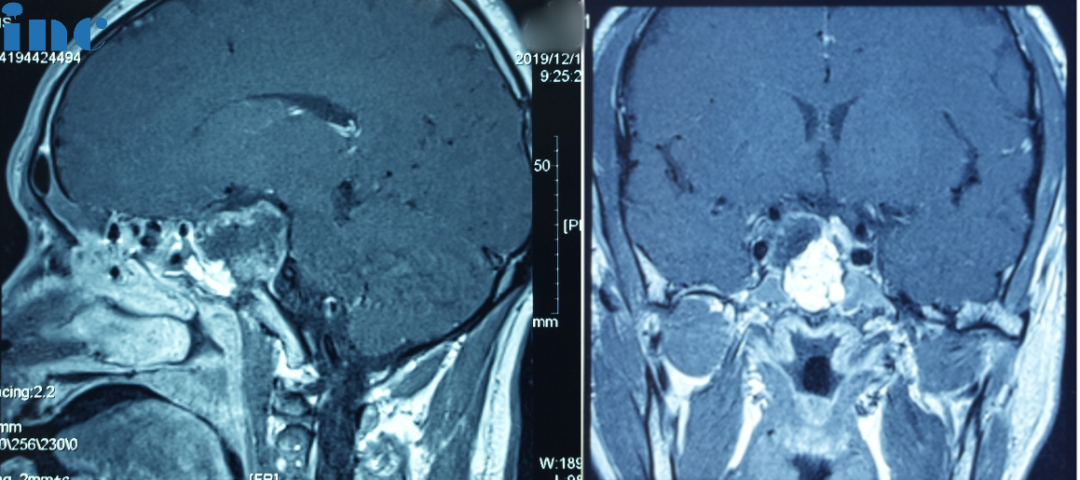
2021:Second open surgery
In 2021,Mr.Su again presented with vision loss and visual field deficits.A new MRI scan at his local hospital suggested a recurence of the chordoma.
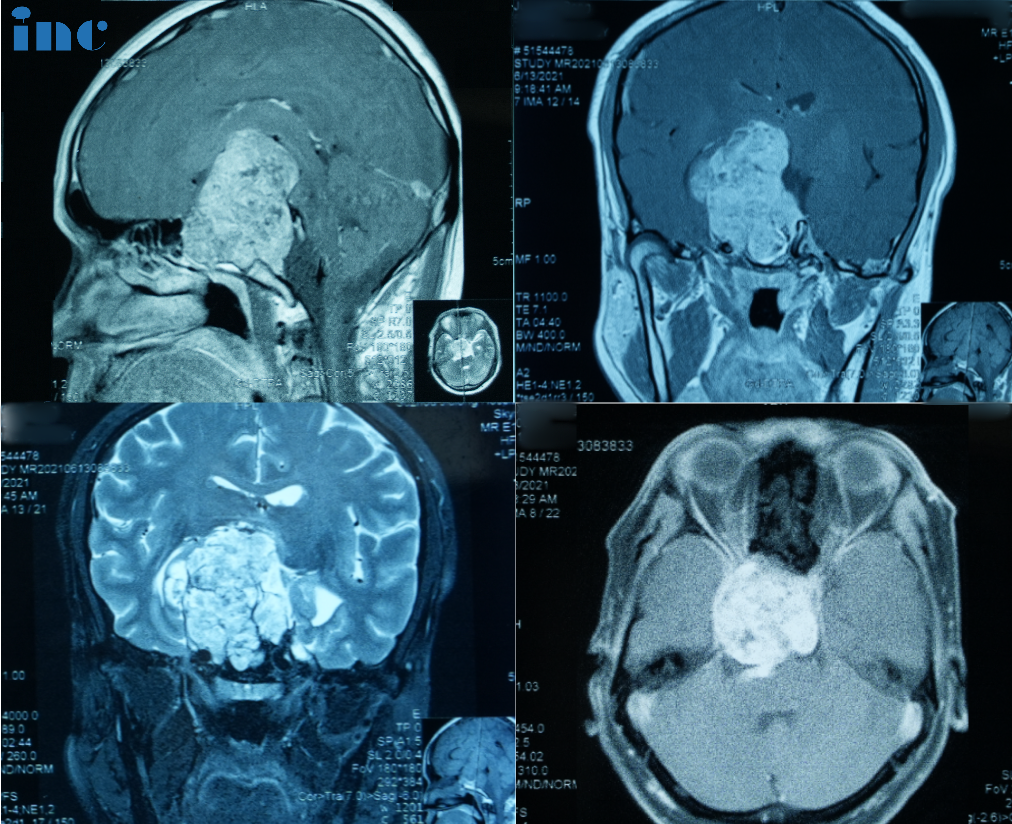

On 7 July 2021,Mr.Su underwent his second surgery,this time via a craniotomy.After a relatively long recovery period,Mr.Su's vision and visual field completely recovered.
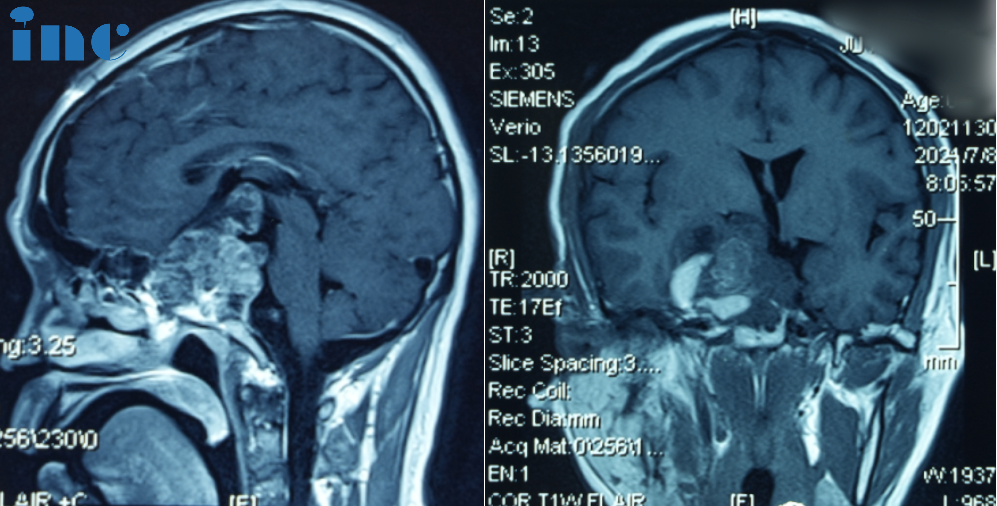
2023:Third surgery via transnasal endoscopic approach
In July 2022,Mr.Su's vision related symptoms worsened again for the third time.An MRI scan revealed another recurence of his chordoma.
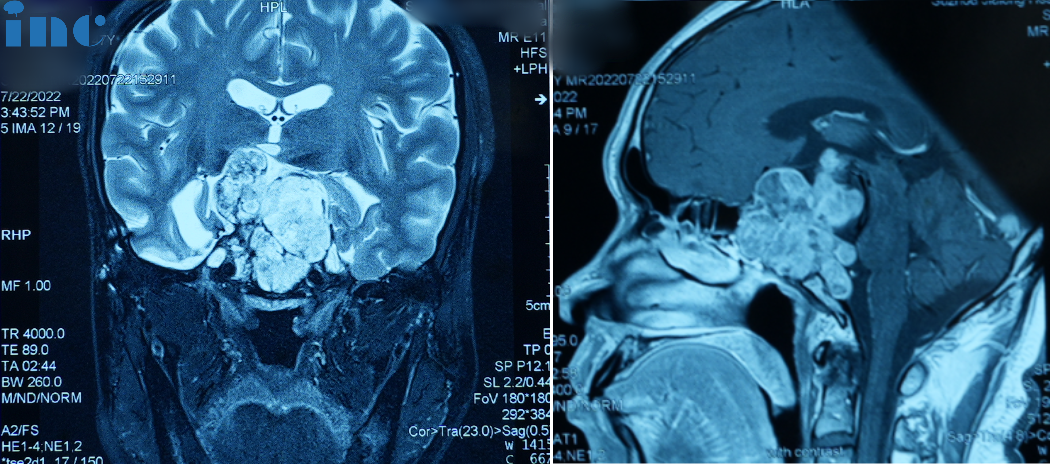
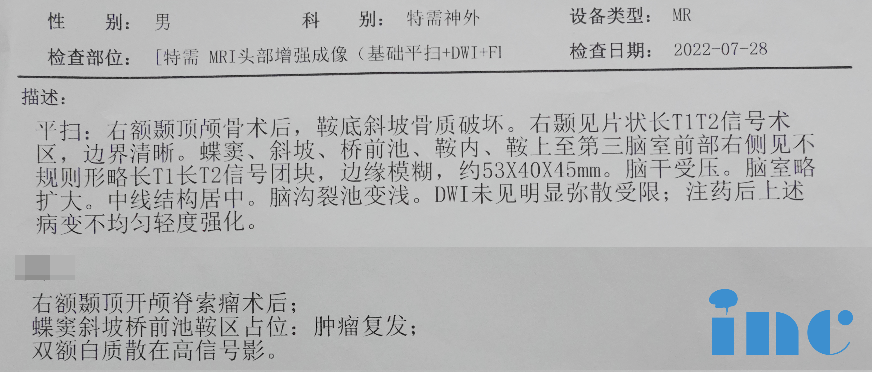
Because Mr.Su did not want to undergo another open surgery,a transnasal endoscopic approach was utilized in his third tumor resection on 8 October 2022.The post-operative pathology confirmed the recurence of the chordoma.After this surgery,Mr.Su showed symptoms of endocrine dysfunction,including drowsiness and lethargy.He also had hydrocephalus,an excessive accumulation of cerebrospinal fluid in the brain leading to increased intracranial pressure.A shunt was placed on 19 November the same year,after which Mr.Su's symptoms disappeared.
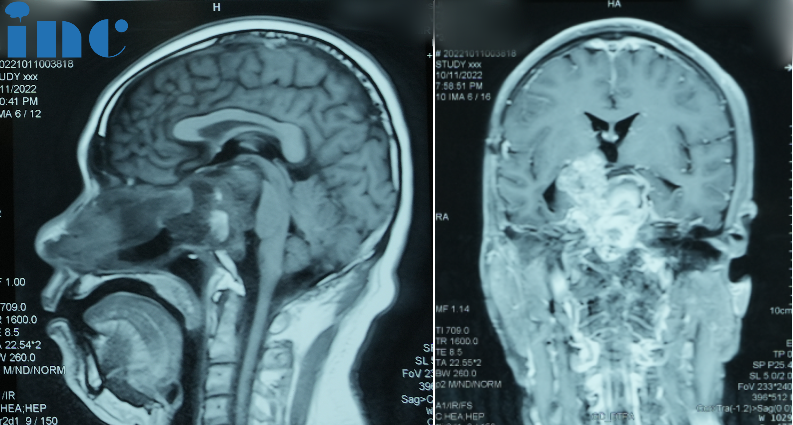
At the end of January 2023,Mr.Su presented with the usual symptoms the fourth time.In April,he felt the strength in his limbs had decreased,and although he could stand and walk on his own,he felt unsteady.
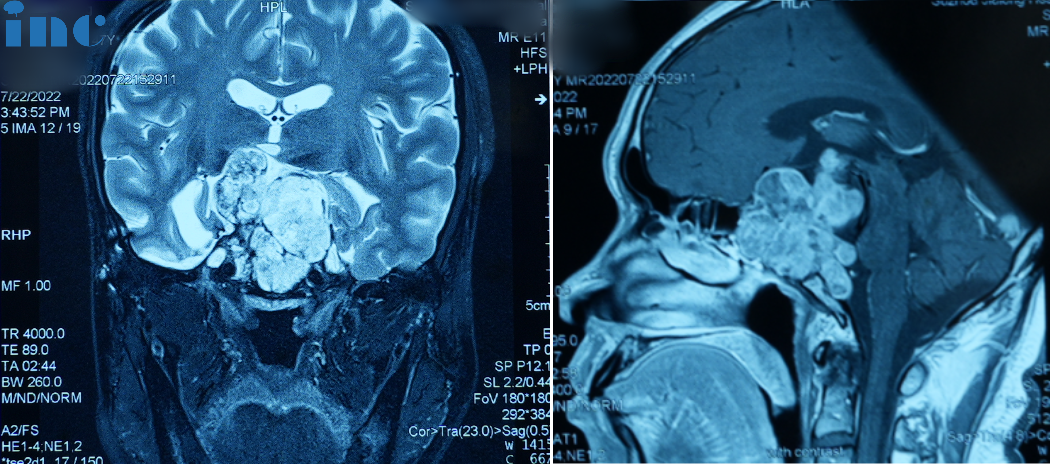
Mr.Su's health continued to deteriorate dramatically.Apart from his vision loss,visual field deficits and unsteady walk,he developed slurred speech and difficulties swallowing.He would often choke.He also showed impaired eye movement,weakness of the upper limbs,and twitching in the corners of his mouth.But this time,Mr.Su's family struggled with the decision in favor of surgery.Following the recommendation of a befriended doctor,they contacted INC and made an appointment for a remote consultation with Professor Froelich,who was scheduled to come to China for surgical demonstrations.
Multidisciplinary teamwork and constant hormone supplementation gave Mr.Su a chance to have surgery again
In more than 3 years,Mr.Su underwent three tumor resections(two transnasal endoscopic and one craniotomy)and one hydrocephalus shunt placement in several hospitals in China.Now,his tumor has recured yet again and his symptoms have worsened.Mr Su learned that Professor Froelich,a member of the World Advisory Neurosurgical Group(WANG)was invited by INC to come to China for academical exchanges.
"He has no energy and is very very weak."Professor Froelich had reviewed Mr.Su's MRI images back in France,but he was shocked when he saw the patient in person."His symptoms are not caused by the tumor."After various tests were done,Prof.Froelich found out that many of Mr.Su's hormone levels were low.
Prof.Froelich's time in China was very limited,and the patient and his family had waited for months to do the surgery.But in this weak condition,Mr.Su's body could hardly tolerate surgery.Prof.Froelich immediately assembled a Sino-French team of neurosurgeons and endocrinologists to discuss Mr.Su's case and his hormone supplementation.After discussion,it was determined that Mr.Sue would be given a high dose of hormone supplementation starting the same day.Eventually,Mr.Su's condition began to improve significantly and Professor Froelich decided to operate on the patient.
Everything had to be considered:how to operate,what details to pay attention to during the procedure,what kind of accidents could occur and how to cope with them.Everything was discussed again and again.In the end,a detailed and thorough surgery plan came together.Prof.Froelich decided to use his"chopstick technique",the combined use of microscope and endoscope.With the combined use of the two,the team was able to maximize the removal of Mr.Su's chordoma.With Prof.Froelich's chopstick technique,the surgeon can operate the endoscope,the suction device and a third instrument simultaneously.The surgeon can rotate the suction device flexibly and choose different angles of the surgical instruments to remove the tumor more thoroughly while preserving normal tissue and nerve function to the maximum extent.
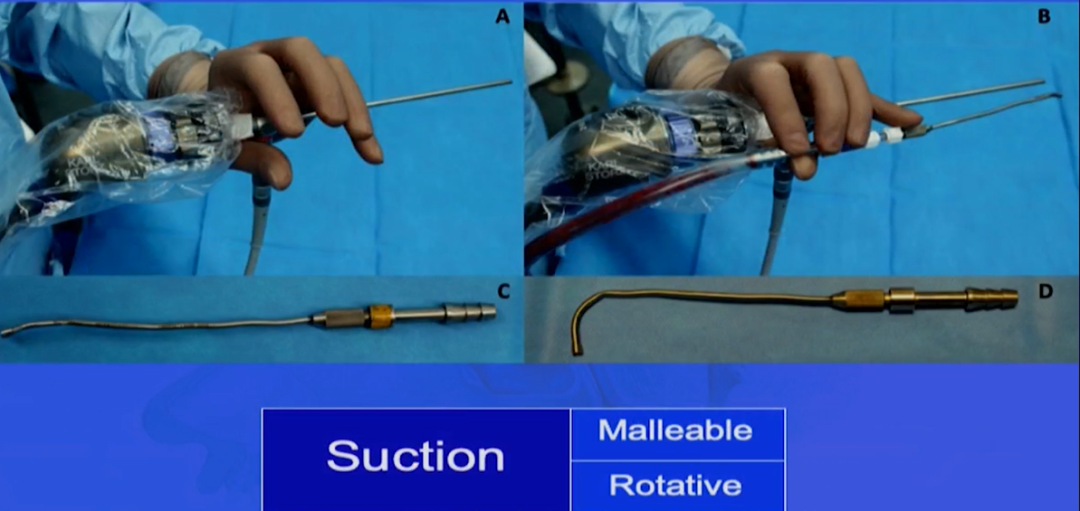
The chopstick technique
May 15,11:03 AM:Surgery is scheduled
Prof.Froelich personally lead the surgical team.During the operation,Director Huang Yulun of the Department of Neurosurgery,Director Li Jian of the Department of Anesthesiology and Surgery,and Deputy Director Wang Yongqiang of the Department of Neurophysiological Monitoring cooperated with Prof.Froelich to ensure that the patient's vital signs were stable throughout the entire operation.This difficult and complex chordoma resection ended perfectly,and Mr.Su's tumor was basically completely resected.

Froelich教授与他神经内镜的“筷子技术”,使得肿瘤切除更完全,对于显微镜无法到达的区域或者死角,内镜可以一并切除。此外,医生操作也更灵活,可有空余的手进行相关手术操作;手术也更顺利,避免助手与主刀器械“打架”。
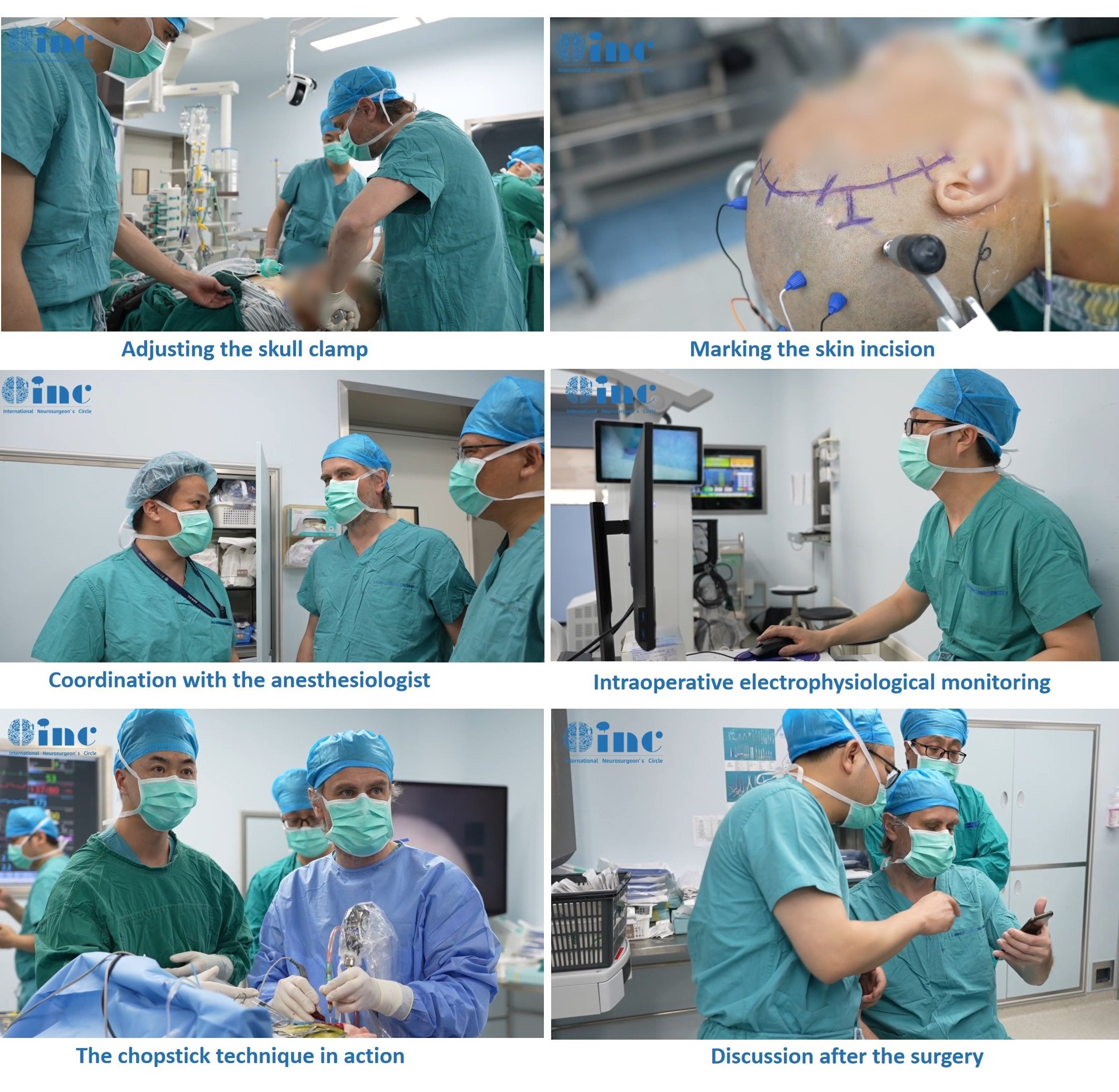
Mr.Su woke up in the ICU,where Prof.Froelich came to check on his condition.He was able to raise both arms and hold the professors'hand.

Pre-and post-operative MRI
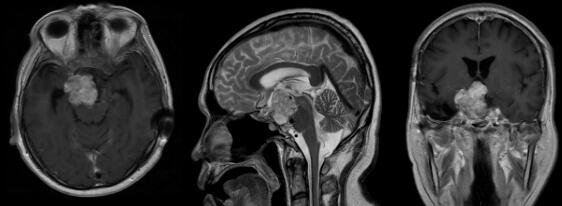
Pre-operative MRI:An extensive tumor can be seen,involving numerous structures in the skull base with erosion of the clivus,sellar and suprasellar and the cavernous sinus as well as envelopment of the internal carotid artery.The tumor pushes upward against the optic nerve and optic chiasm and reaches the floor of the third ventricle.Posteriorly,it pushes against the brainstem and basilar artery.In some portions,the tumor is poorly demarcated from the brainstem.
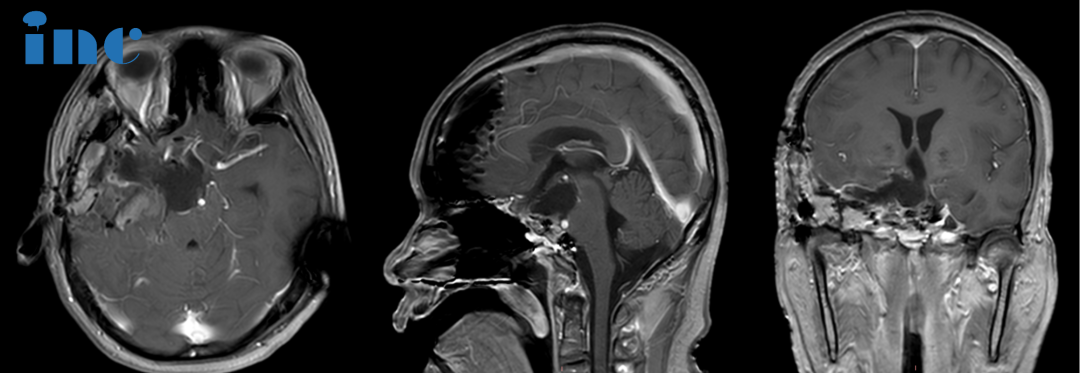
Post-operative MRI:The tumor was resected from the sellar and suprasellar regions,from the cavernous sinus and the third ventricle.The middle image shows an MRI artifact on the left.
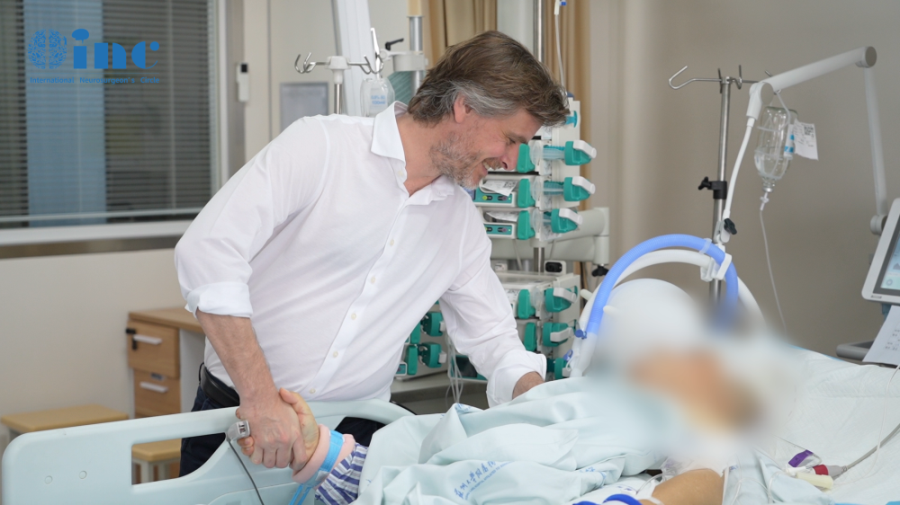
Professor Froelich and Mr.Su shake hands after the surgery.
After the operation,Mr.Su's wife was waiting at the door of ICU.When she saw Prof.Froelich,who came to check the room,she kept expressing his gratitude.She had even written a thank-you letter in English for the professor,that she had translated herself.When she handed over the letter,she couldn't hold her tears anymore."I am really lucky that you were able to perform surgery on my husband,which was almost perfect and very successful.Thank you very much!I am glad we didn't give up on my husband now,even if everyone gave up and said he couldn't do it anymore.It's just use,the mother and son,who have been persisting on the long journey of seeking medical treatment for him.We gritted our teeth to overcome the hardships.Pushing aside the dark clouds to see the dear sky,the dawn of victory is right in front of us.Perhaps it was destined that my husband's life should not be ended.Luckily I met you,you gave my husband his second life.Once again,I sincerely thank you four your life-saving kindness.I wish you smooth work and happy every day!"
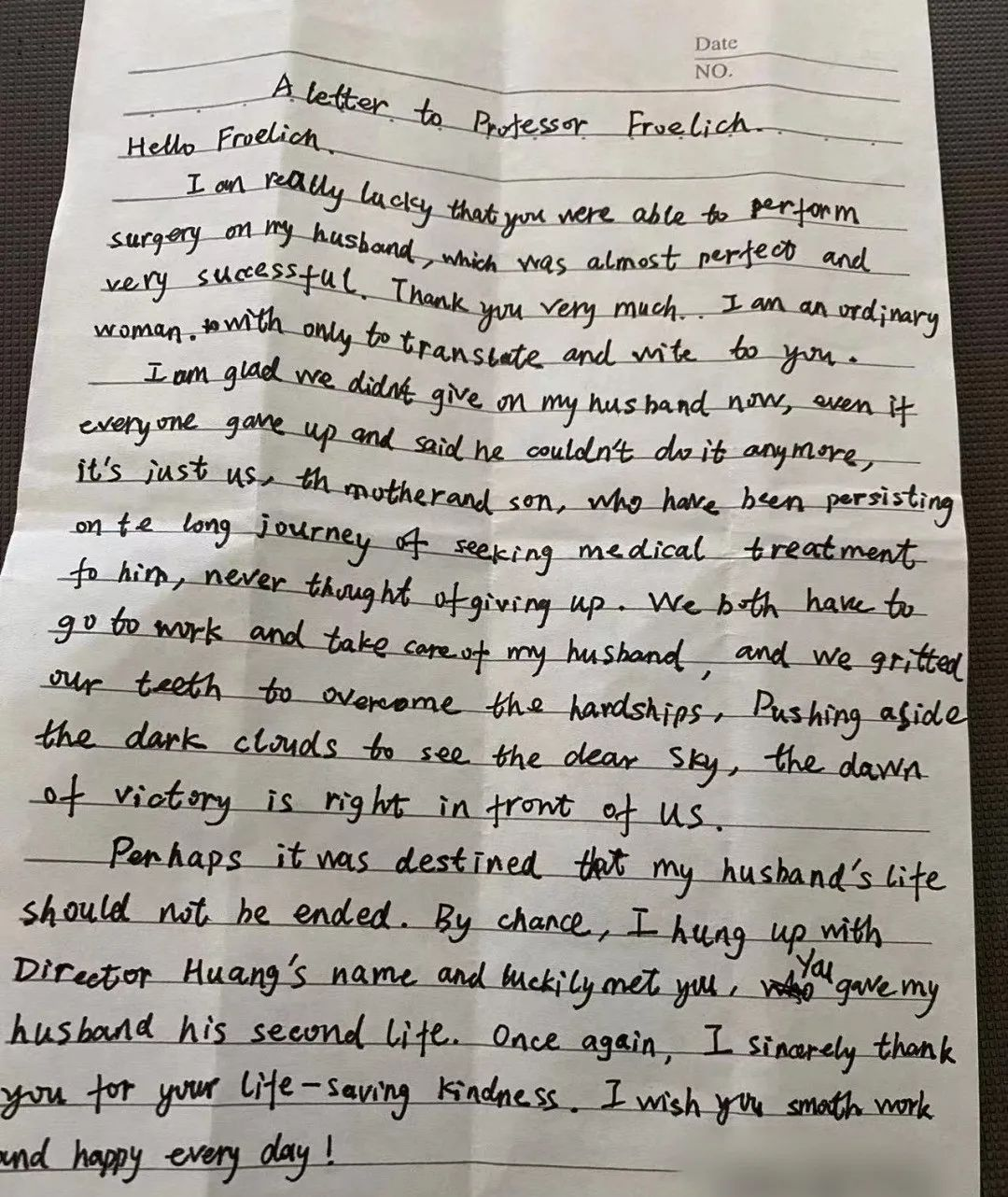
On 16 May,as Professor Froelich was about to leave,he visited Mr.Su to check up on his condition and to say goodbye to him and his family.He was recovering well with a clear consciousness,improved swallowing,and normal movement of his arms and legs.Now,he only needed to focus on his rehabilitation and his hormone therapy.
Two months after his surgery,the team of INC visited Mr.Su and his wife at the rehabilitation center.Encouraged and accompanied by his wife,Mr.Su is steadily getting better."He is a lot better now.He wasn't so good before the surgery.The last couple of days,we feel much more confident."Mr.Su is also about to begin the next step of proton therapy.We hope that Mr.Su will get better and better.
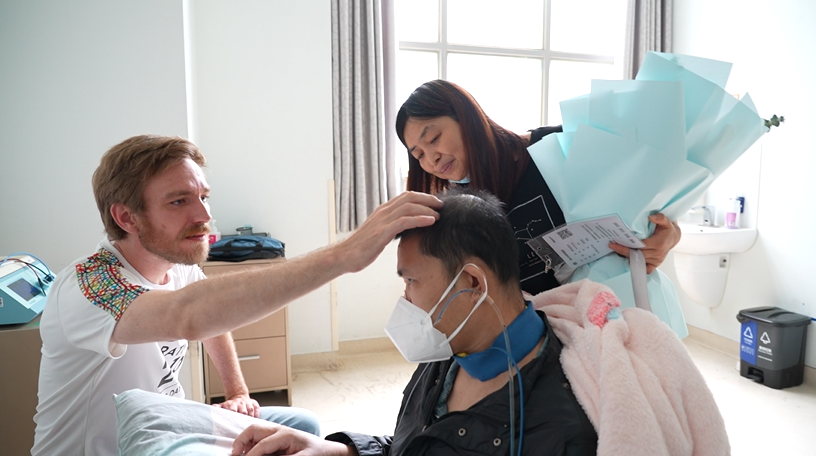
Mr.Krabbe,INC's Sino-German Medical Collaboration Officer is visiting Mr.Su and his wife.